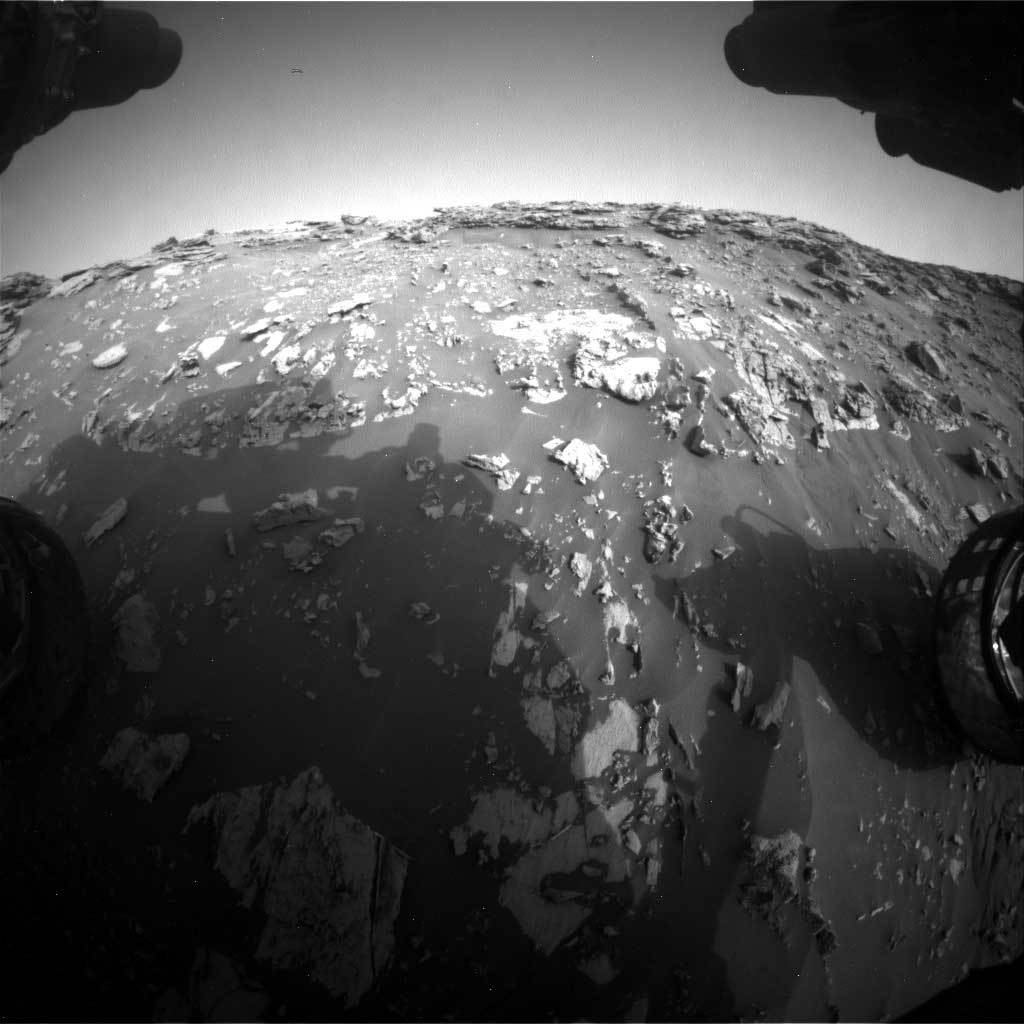2 min read

Curiosity successfully completed the first drive of the ascent path onto the Greenheugh pediment, and ended up at a 26.7 degree tilt and at the highest elevation so far on Mount Sharp! Kudos to the rover planning engineers at JPL who executed the ambitious drive perfectly!
The focus of planning today was to characterize the bedrock immediately underlying the pediment capping rock with ChemCam and Mastcam and to continue the ascent. ChemCam will shoot two bedrock targets (“Corriecravie” and “Shannochie”) to document any compositional changes as we near the contact. This will help the team test hypotheses we have about water-rock interactions along the contact. Mastcam will be used to document the texture of these targets and to look more closely at the contact. There was not enough time in this plan to unstow the arm and do contact science as well as drive, and the priority is to ascend the pediment, so we chose the option of driving over contact science. We hope to do contact science later in the week, possibly at the contact tomorrow, and/or once we are on top of the pediment cap rock.
After what we hope will be another successful drive, there is a Mastcam clast survey, Navcam complete the 360, ChemCam AEGIS and MARDI planned. Standard REMS, DAN and RAD activities round out the plan.
Written by Lucy Thompson, Planetary Geologist at University of New Brunswick







